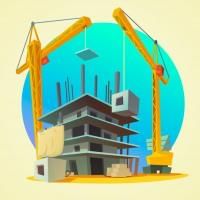Civil Engineering (CE) Exam > Civil Engineering (CE) Questions > A doubdly reinforced beam is considered less ...
Start Learning for Free
A doubdly reinforced beam is considered less economical than a singly reinforced beam because.
- a)tensile steel required is more than that for a balanced section.
- b)shear reinforced is more
- c)concrete is not stressed to its full value
- d)compressive steel is under-stressed
Correct answer is option 'D'. Can you explain this answer?
| FREE This question is part of | Download PDF Attempt this Test |
Verified Answer
A doubdly reinforced beam is considered less economical than a singly ...
Option (d) is correct The doubly reinforced beam section is needed (i) When depth of the section is restricted and the strength available from a singly reinforced section is inadequate (ii) At support of a continuous beam or slab where bending moment changes sign.
View all questions of this test
Most Upvoted Answer
A doubdly reinforced beam is considered less economical than a singly ...
Introduction:
A doubly reinforced beam is a reinforced concrete beam that contains both tension steel and compression steel. The tensile steel is placed at the bottom of the beam and the compressive steel is placed at the top of the beam. The purpose of adding compression steel is to increase the load carrying capacity of the beam.
Explanation:
The statement given in the question is that a doubly reinforced beam is considered less economical than a singly reinforced beam. The reason for this is that the compressive steel in a doubly reinforced beam is under-stressed. This means that the compressive steel is not being fully utilized to carry the load of the beam. The following points explain this in detail:
- Compressive steel: The compressive steel that is added to a doubly reinforced beam is placed at the top of the beam. The purpose of adding this steel is to increase the load carrying capacity of the beam. However, in most cases, the compressive steel is not fully utilized because the concrete in the top portion of the beam is not stressed to its full value. This means that the compressive steel is under-stressed and is not being fully utilized to carry the load of the beam.
- Tensile steel: The amount of tensile steel required in a doubly reinforced beam is more than that required in a singly reinforced beam. This is because the compressive steel that is added to the beam reduces the amount of tensile steel that can be added to the beam. The amount of tensile steel that can be added to the beam is limited by the requirement that the beam must be in a balanced section. In a balanced section, the tension steel and the compression steel are stressed to their full capacity.
- Shear reinforcement: The amount of shear reinforcement required in a doubly reinforced beam is more than that required in a singly reinforced beam. This is because the compressive steel that is added to the beam reduces the amount of concrete that is available to resist the shear forces. The shear reinforcement is added to the beam to increase the shear capacity of the beam.
- Concrete stress: In a doubly reinforced beam, the concrete in the top portion of the beam is not stressed to its full value. This means that the concrete is not being fully utilized to carry the load of the beam. This is because the compressive steel that is added to the beam reduces the amount of concrete that is available to carry the load of the beam.
Conclusion:
In conclusion, a doubly reinforced beam is considered less economical than a singly reinforced beam because the compressive steel in a doubly reinforced beam is under-stressed. This means that the compressive steel is not being fully utilized to carry the load of the beam. The amount of tensile steel required in a doubly reinforced beam is more than that required in a singly reinforced beam, and the amount of shear reinforcement required in a doubly reinforced beam is also more than that required in a singly reinforced beam.
A doubly reinforced beam is a reinforced concrete beam that contains both tension steel and compression steel. The tensile steel is placed at the bottom of the beam and the compressive steel is placed at the top of the beam. The purpose of adding compression steel is to increase the load carrying capacity of the beam.
Explanation:
The statement given in the question is that a doubly reinforced beam is considered less economical than a singly reinforced beam. The reason for this is that the compressive steel in a doubly reinforced beam is under-stressed. This means that the compressive steel is not being fully utilized to carry the load of the beam. The following points explain this in detail:
- Compressive steel: The compressive steel that is added to a doubly reinforced beam is placed at the top of the beam. The purpose of adding this steel is to increase the load carrying capacity of the beam. However, in most cases, the compressive steel is not fully utilized because the concrete in the top portion of the beam is not stressed to its full value. This means that the compressive steel is under-stressed and is not being fully utilized to carry the load of the beam.
- Tensile steel: The amount of tensile steel required in a doubly reinforced beam is more than that required in a singly reinforced beam. This is because the compressive steel that is added to the beam reduces the amount of tensile steel that can be added to the beam. The amount of tensile steel that can be added to the beam is limited by the requirement that the beam must be in a balanced section. In a balanced section, the tension steel and the compression steel are stressed to their full capacity.
- Shear reinforcement: The amount of shear reinforcement required in a doubly reinforced beam is more than that required in a singly reinforced beam. This is because the compressive steel that is added to the beam reduces the amount of concrete that is available to resist the shear forces. The shear reinforcement is added to the beam to increase the shear capacity of the beam.
- Concrete stress: In a doubly reinforced beam, the concrete in the top portion of the beam is not stressed to its full value. This means that the concrete is not being fully utilized to carry the load of the beam. This is because the compressive steel that is added to the beam reduces the amount of concrete that is available to carry the load of the beam.
Conclusion:
In conclusion, a doubly reinforced beam is considered less economical than a singly reinforced beam because the compressive steel in a doubly reinforced beam is under-stressed. This means that the compressive steel is not being fully utilized to carry the load of the beam. The amount of tensile steel required in a doubly reinforced beam is more than that required in a singly reinforced beam, and the amount of shear reinforcement required in a doubly reinforced beam is also more than that required in a singly reinforced beam.
Free Test
FREE
| Start Free Test |
Community Answer
A doubdly reinforced beam is considered less economical than a singly ...
Doubly reinforced beams might be less economical but it increases the overall efficiency of the structure and the load carrying capacity. Doubly reinforced beams are designed, if the moment of resistance of a singly reinforced balanced section is less than actual moment acting on the section.
Attention Civil Engineering (CE) Students!
To make sure you are not studying endlessly, EduRev has designed Civil Engineering (CE) study material, with Structured Courses, Videos, & Test Series. Plus get personalized analysis, doubt solving and improvement plans to achieve a great score in Civil Engineering (CE).

|
Explore Courses for Civil Engineering (CE) exam
|

|
Similar Civil Engineering (CE) Doubts
A doubdly reinforced beam is considered less economical than a singly reinforced beam because.a)tensile steel required is more than that for a balanced section.b)shear reinforced is morec)concrete is not stressed to its full valued)compressive steel is under-stressedCorrect answer is option 'D'. Can you explain this answer?
Question Description
A doubdly reinforced beam is considered less economical than a singly reinforced beam because.a)tensile steel required is more than that for a balanced section.b)shear reinforced is morec)concrete is not stressed to its full valued)compressive steel is under-stressedCorrect answer is option 'D'. Can you explain this answer? for Civil Engineering (CE) 2024 is part of Civil Engineering (CE) preparation. The Question and answers have been prepared according to the Civil Engineering (CE) exam syllabus. Information about A doubdly reinforced beam is considered less economical than a singly reinforced beam because.a)tensile steel required is more than that for a balanced section.b)shear reinforced is morec)concrete is not stressed to its full valued)compressive steel is under-stressedCorrect answer is option 'D'. Can you explain this answer? covers all topics & solutions for Civil Engineering (CE) 2024 Exam. Find important definitions, questions, meanings, examples, exercises and tests below for A doubdly reinforced beam is considered less economical than a singly reinforced beam because.a)tensile steel required is more than that for a balanced section.b)shear reinforced is morec)concrete is not stressed to its full valued)compressive steel is under-stressedCorrect answer is option 'D'. Can you explain this answer?.
A doubdly reinforced beam is considered less economical than a singly reinforced beam because.a)tensile steel required is more than that for a balanced section.b)shear reinforced is morec)concrete is not stressed to its full valued)compressive steel is under-stressedCorrect answer is option 'D'. Can you explain this answer? for Civil Engineering (CE) 2024 is part of Civil Engineering (CE) preparation. The Question and answers have been prepared according to the Civil Engineering (CE) exam syllabus. Information about A doubdly reinforced beam is considered less economical than a singly reinforced beam because.a)tensile steel required is more than that for a balanced section.b)shear reinforced is morec)concrete is not stressed to its full valued)compressive steel is under-stressedCorrect answer is option 'D'. Can you explain this answer? covers all topics & solutions for Civil Engineering (CE) 2024 Exam. Find important definitions, questions, meanings, examples, exercises and tests below for A doubdly reinforced beam is considered less economical than a singly reinforced beam because.a)tensile steel required is more than that for a balanced section.b)shear reinforced is morec)concrete is not stressed to its full valued)compressive steel is under-stressedCorrect answer is option 'D'. Can you explain this answer?.
Solutions for A doubdly reinforced beam is considered less economical than a singly reinforced beam because.a)tensile steel required is more than that for a balanced section.b)shear reinforced is morec)concrete is not stressed to its full valued)compressive steel is under-stressedCorrect answer is option 'D'. Can you explain this answer? in English & in Hindi are available as part of our courses for Civil Engineering (CE).
Download more important topics, notes, lectures and mock test series for Civil Engineering (CE) Exam by signing up for free.
Here you can find the meaning of A doubdly reinforced beam is considered less economical than a singly reinforced beam because.a)tensile steel required is more than that for a balanced section.b)shear reinforced is morec)concrete is not stressed to its full valued)compressive steel is under-stressedCorrect answer is option 'D'. Can you explain this answer? defined & explained in the simplest way possible. Besides giving the explanation of
A doubdly reinforced beam is considered less economical than a singly reinforced beam because.a)tensile steel required is more than that for a balanced section.b)shear reinforced is morec)concrete is not stressed to its full valued)compressive steel is under-stressedCorrect answer is option 'D'. Can you explain this answer?, a detailed solution for A doubdly reinforced beam is considered less economical than a singly reinforced beam because.a)tensile steel required is more than that for a balanced section.b)shear reinforced is morec)concrete is not stressed to its full valued)compressive steel is under-stressedCorrect answer is option 'D'. Can you explain this answer? has been provided alongside types of A doubdly reinforced beam is considered less economical than a singly reinforced beam because.a)tensile steel required is more than that for a balanced section.b)shear reinforced is morec)concrete is not stressed to its full valued)compressive steel is under-stressedCorrect answer is option 'D'. Can you explain this answer? theory, EduRev gives you an
ample number of questions to practice A doubdly reinforced beam is considered less economical than a singly reinforced beam because.a)tensile steel required is more than that for a balanced section.b)shear reinforced is morec)concrete is not stressed to its full valued)compressive steel is under-stressedCorrect answer is option 'D'. Can you explain this answer? tests, examples and also practice Civil Engineering (CE) tests.

|
Explore Courses for Civil Engineering (CE) exam
|

|
Suggested Free Tests
Signup for Free!
Signup to see your scores go up within 7 days! Learn & Practice with 1000+ FREE Notes, Videos & Tests.



















